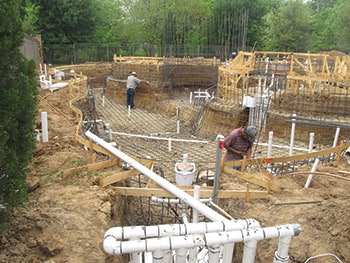
As we look out at the broad landscape of the pool and spa industry, for the sake of discussion, let’s replace the “cautiously optimistic” quick-scan take in favor of a more confident and far-reaching perspective — just to see how we like the view.
The scenery certainly does look more welcoming these days as most sources generally agree the brutal trenches of the “Great Recession” are finally behind us. According to this year’s AQUA Builder’s Survey, more than 60 percent report 2012 was better than 2011 with 75 percent believing 2013 will be even better. Less than 3 percent see business going in the wrong direction.
Builders consistently report improvements in their respective markets with leads for brand-new projects on the steep rise, neatly attended by large upticks in renovation work. Prospective clients who previously couldn’t secure financing are coming back into the fold as funding becomes more available, while those new to the notion of owning an outdoor paradise are entering the picture as well.
No doubt, the economy is slowly coming to life. As of this writing, housing starts are up, real estate values are increasing, manufacturing is expanding, retail spending is on the rise, the stock market is reaching new heights and consumer confidence is improving. True, all of this good news remains tempered by stubbornly high unemployment numbers, concerns over draconian government regulation, the U.S. national debt and troubled overseas economies.
Still, on balance, there now remains only small and shrinking doubt that, economically speaking, our industry is picking up speed. The question becomes how do we as an industry maintain and increase that acceleration? How do we take from the past and apply what we’ve learned to support future success?
I believe we start by recognizing that through the activity of constructing bodies of water, we are in fact participating in a range of disciplines that are far greater than the confines of the pool and spa industry. And to advance, we must specialize and team up. That is, instead of trying to master all aspects of a task, we must employ a unified group of experts, each of them masters of a particular field.
Consider the role geology plays in what we do. Ours is a product that in most cases exists in the ground and is subject to the spectrum of geological forces inherent in the Earth’s crust. That’s why we actively apply the broader disciplines of geological science and structural engineering to create vessels that withstand terrestrial forces. The farther into that world we travel, the better the end product becomes.
And then there’s electrical theory, the science through which we create electrically safe and efficient systems, as well as combat the effects of stray current and corrosion. All the same is true to an even greater extent of hydraulics and chemistry — applied sciences essential to all forms of aquatic design and construction.
In a completely different part of the aquatic architectural spectrum, we cross paths with the world of color theory. It’s self-evident that every finish element that goes into a backyard has a color. What many fail to realize or at least don’t fully consider, is that through choosing and applying color schemes, we are influencing the visual experience people have when they spend time in the environments our industry creates.
Similar associations can be seen in numerous other creative fields into which we cross: art history, landscape architecture, site analysis, drawing and drafting, design presentation, materials science and industrial design.
None of us can master and apply all of these fields of learning in a single backyard project. But groups of us, each bringing these separate perspectives to bear on a job, can produce wonders.
I believe it all boils down to the old adage that the whole is greater than the sum of the parts. At the same time, we must bear in mind that ultimately, every aspect of our industry exists in service of a simple human experience — interaction with water.
Embracing that fundamental outcome is what ultimately unifies all activities and disciplines that fall under the umbrella of “pool/spa and aquatic.” And only by “pooling” our abilities in larger and better combinations can we reach it.
That may not be a cautious view, but the road ahead will require bold thinking. We must envision a great industry if we wish to build one. Wright was right; ideas truly are salvation by imagination.
Comments or thoughts on this article? Please e-mail [email protected].
To see the findings from our Builder survey, come back Thursday, May 30.












































